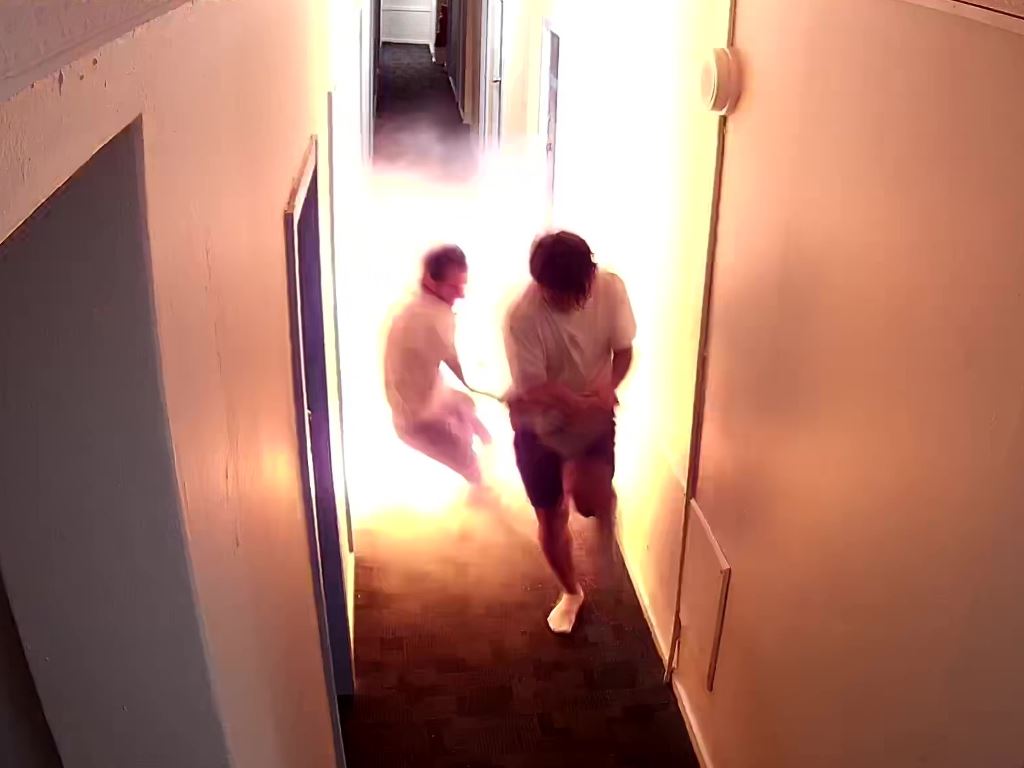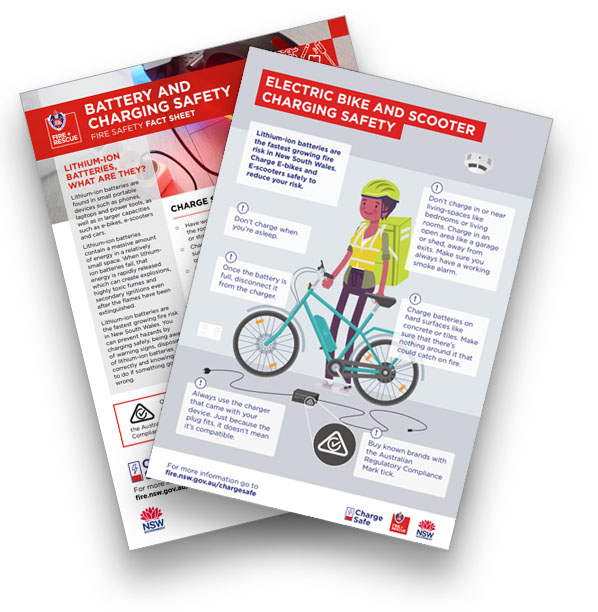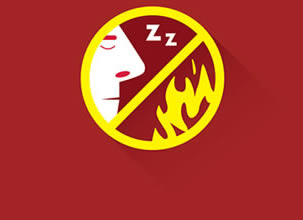Lithium-ion battery safety campaign kit
The challenge
Lithium-ion batteries are everywhere: in e-bikes, e-scooters, power tools, phones and laptops. They're powerful and convenient, but they also pose a growing fire risk. Across NSW and globally, fire crews are responding to more incidents caused by batteries being charged incorrectly or damaged. Many people don't realise that the devices they use every day could become dangerous if not charged safely.
Our approach
The campaign uses clear, warning-style visuals and simple, direct messages to cut through and remind people of the hidden dangers in everyday devices.
Campaign materials available for download
Partners and stakeholders can download our campaign resources and share them with their communities. Together, we can help reduce battery fire incidents and keep people safe.
On this page

Battery fire statistics
This chart represents battery related fires and injuries that have occured during Jan 2023 - Jun 2024.
Click the legend items below to display the categories of battery related fires and injuries.
Micromobility refers to e-bikes, e-scooters, mobility scooters or golf carts. Personal devices that are used to aid in mobility.
Community resources
General lithium-ion battery safety
Campaign webpage: www.fire.nsw.gov.au/chargesafe
Printable factsheet: General battery and charging safety factsheet (PDF)
Delivery riders: e-bike battery safety
Campaign webpage: www.fire.nsw.gov.au/ebikes or www.fire.nsw.gov.au/escooters
Printable factsheet: E-bike and e-scooter charging safety poster (PDF)
Social media resources
Detailed information
For comprehensive information on Lithium-ion batteries, please visit www.fire.nsw.gov.au/batteries.
Resources for media
Media Releases: Plotted locations of Lithium-ion related incidents we have mentioned.
Video footage / B-roll
Research
Fire and Rescue NSW is currently leading a collaborative research program on the Safety of Alternative and Renewable Energy Technologies (SARET). Click here to learn more about the SARET program.
Glossary of terms
Micromobility
Micromobility refers to e-bikes, e-scooters, mobility scooters or golf carts. Personal devices that are used to aid in mobility.
Contact
Please contact media@fire.nsw.gov.au for media enquires or click here for further information.
Research related enquires
Please contact us at research@fire.nsw.gov.au for all enquiries regarding the program.





